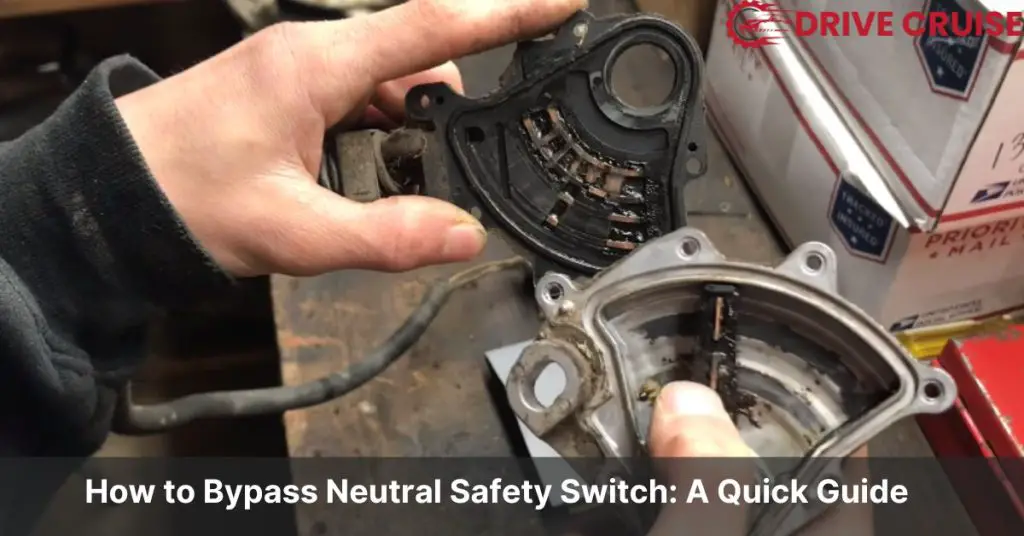The neutral safety switch is an important safety feature in your vehicle. It ensures that your car only starts in park or neutral gear, preventing it from accidentally starting in drive or reverse. However, if your neutral safety switch is faulty or damaged, it can prevent your car from starting altogether. In this article, we will explore the function of the neutral safety switch, why it’s important, and safe alternatives to bypassing it.
Before attempting to bypass the neutral safety switch, it’s important to understand its function. The neutral safety switch is typically located near the gear shift lever, and it prevents the engine from starting unless the transmission is in park or neutral. This is to prevent the car from moving when the engine is started. If the switch is faulty, it can prevent your car from starting even when it’s in park or neutral.
While it may be tempting to bypass the neutral safety switch to get your car started, it’s important to note that doing so can be incredibly dangerous. Bypassing the switch can cause your car to start in gear, which could result in serious accidents or injuries. Instead, it’s recommended that you have your neutral safety switch repaired or replaced by a qualified mechanic.
Understanding the Neutral Safety Switch: A Crucial Safety Feature
When you turn the key in your car’s ignition, the starter motor engages and cranks the engine. However, if the transmission is in gear, this can cause your car to lurch forward or backward unexpectedly, which can be dangerous for you and others around you. This is where the neutral safety switch comes in.
The neutral safety switch is a safety feature that prevents the starter motor from engaging unless the transmission is in park or neutral. It is typically located on the transmission or the shifter mechanism and is wired into the starter motor circuit.
When the transmission is in park or neutral, the switch completes the starter motor circuit, allowing the engine to start. However, when the transmission is in gear, the switch interrupts the circuit, preventing the starter motor from engaging. This helps to prevent accidental starts in gear, which can be a serious safety hazard.
If the neutral safety switch fails, it can cause unintended engine starts while the car is in gear, which can be dangerous for you and others around you. Therefore, it is important to ensure that the neutral safety switch is functioning properly at all times.
If you need to bypass the neutral safety switch for any reason, it is important to do so carefully and meticulously to prevent any damage to your vehicle’s electrical system. There are several methods to bypass the neutral safety switch, including splicing or connecting specific wires together. However, it is important to note that bypassing the neutral safety switch can be dangerous and should only be done if absolutely necessary.
In the next section, we will cover step-by-step instructions on how to bypass the neutral safety switch for an automatic transmission.
Symptoms of a Faulty Neutral Safety Switch
If you are experiencing issues with your car starting or shifting gears, it could be due to a faulty neutral safety switch. Here are some common symptoms to look out for:
Difficulty Starting in Park or Neutral
If you are having trouble starting your car in park or neutral, it could be a sign that the neutral safety switch is not functioning properly. The engine may not crank or turn over when the gear selector is in park or neutral, indicating a potential issue with the switch.
Engine Starts in Gear
This is a serious safety hazard and should not be ignored. If the engine starts unexpectedly while the car is in gear, it can lead to loss of control and a collision. If you experience this issue, it’s important to get your car checked out by a professional as soon as possible.
Warning Lights
Some vehicles might illuminate a check engine light or other warning indicators if the neutral safety switch malfunctions. If you notice any warning lights on your dashboard, it’s important to get your car checked out by a professional to diagnose and fix the issue.
If you are experiencing any of these symptoms, it’s important to get your neutral safety switch checked out by a professional. However, if you are in a pinch and need to bypass the switch temporarily, there are a few methods you can try. Keep in mind that bypassing the neutral safety switch is not recommended and should only be done as a last resort.
Safe Solutions for Addressing Neutral Safety Switch Issues
If you suspect that your vehicle’s neutral safety switch is malfunctioning, it’s important to take action to address the issue. Here are two safe solutions to consider:
Diagnosis and Repair by a Qualified Mechanic
If you’re not familiar with the inner workings of your vehicle, it’s best to have a qualified mechanic diagnose and repair the problem. A faulty neutral safety switch can often be repaired or replaced, and a professional mechanic can ensure that the switch is functioning properly before you hit the road again.
To diagnose the issue, the mechanic will likely perform a series of tests to determine whether the switch is faulty or if there’s another underlying issue causing the problem. Once the issue has been identified, the mechanic can then perform the necessary repairs to get your vehicle back in working order.
Temporary Workaround Using the Parking Brake
As a temporary last resort (if absolutely necessary to move the vehicle a short distance), some vehicles allow starting in gear by engaging the parking brake firmly and holding the brake pedal while starting the engine. However, it’s important to stress the dangers of this workaround. This should only be attempted in a safe, controlled environment and with extreme caution. Never attempt to drive the vehicle with a faulty neutral safety switch bypassed in this manner.
If you do attempt this workaround, it’s important to engage the parking brake firmly and hold the brake pedal while starting the engine. Once the engine is running, shift the vehicle into the desired gear and release the parking brake slowly while keeping your foot on the brake pedal. This should allow you to move the vehicle a short distance, but again, it’s important to stress that this is not a long-term solution and should only be attempted in emergency situations.
Conclusion: Prioritizing Safety Over Convenience
In summary, the neutral safety switch is an essential component of your vehicle’s transmission system, as it prevents the engine from starting unless the shifter is in the “Park” or “Neutral” position. By doing so, it ensures that you cannot accidentally start the engine while the car is in gear, which can cause the car to move unexpectedly and potentially cause an accident.
While it may be tempting to bypass the neutral safety switch to save time or money, doing so can be extremely dangerous. Not only can it cause damage to your vehicle’s electrical system, but it can also compromise your safety and the safety of others on the road.
If you suspect that there is an issue with your neutral safety switch, it is important to seek professional help immediately. A qualified mechanic can diagnose the problem and make any necessary repairs to ensure that your vehicle operates safely and reliably.
Related Posts:














